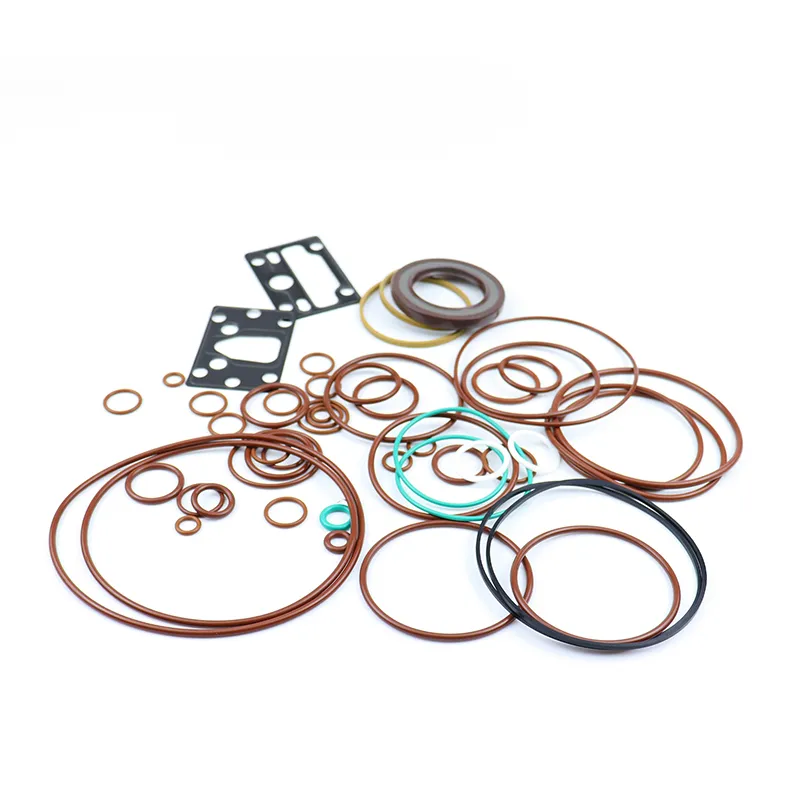Nov . 22, 2024 23:36 Back to list
rear hub seal
Understanding Rear Hub Seals Importance and Maintenance
Rear hub seals are critical components in the functioning of a vehicle's wheel assembly. These seals play a pivotal role in preventing the escape of lubricants and the ingress of contaminants, such as dirt and water, that could compromise the performance and longevity of the wheel hub and the overall drivetrain.
The Function of Rear Hub Seals
The primary function of rear hub seals is to maintain a proper seal around the bearing components of the wheels. Most modern vehicles utilize sealed or semi-sealed bearing systems that require lubrication to function effectively. Rear hub seals ensure that the grease or oil used to lubricate these bearings remains contained while simultaneously preventing harmful external elements from entering the hub assembly.
By maintaining the integrity of the lubrication, rear hub seals provide several benefits. They minimize friction within the bearings, which is crucial for smooth wheel rotation and handling. Additionally, effective sealing helps reduce the overall wear and tear on the components, prolonging their service life. This, in turn, enhances vehicle safety and performance, making regular maintenance and inspection of rear hub seals essential.
Signs of Wear and Tear
Like any mechanical component, rear hub seals are subject to wear over time. Factors such as exposure to harsh weather conditions, road debris, and the natural aging of materials can contribute to the degradation of these seals. There are several signs that vehicle owners can look out for to determine whether their rear hub seals are failing
1. Leaking Grease or Oil One of the most noticeable signs is the presence of grease or oil on the inside of the wheels or the brake components. If you notice a buildup of lubricant, it could indicate that the rear hub seals are no longer doing their job effectively.
2. Grinding Noises Unusual noises emanating from the wheel area, particularly grinding or humming sounds while driving, can signal that the bearings are not receiving adequate lubrication. This could be due to compromised seals allowing lubricant to escape.
rear hub seal

3. Excessive Heat An increase in temperature around the wheel hub can also indicate seal failure. If the seals are leaking and allowing lubrication to escape, the bearings may overheat due to insufficient lubrication.
4. Play in the Wheel If there is noticeable play or looseness in the wheel, it could suggest that the bearings are wearing out quickly, often due to oil or grease loss from faulty hub seals.
Maintenance Recommendations
To ensure the longevity and performance of rear hub seals, vehicle owners should consider the following maintenance practices
1. Regular Inspections Regularly inspecting the rear hub assembly, including the seals, can help detect early signs of wear. Ideally, this should be done during routine maintenance checks or tire rotations.
2. Timely Replacement If a rear hub seal is found to be leaking or failing, it should be replaced promptly. Continuing to drive with faulty seals can lead to more significant issues with the wheel bearings, resulting in costly repairs.
3. Use Quality Parts When replacing rear hub seals, it's essential to use high-quality parts that meet or exceed OEM (Original Equipment Manufacturer) specifications. This ensures optimal performance and longevity.
4. Professional Assistance If you are unsure about the condition of your rear hub seals or the hub assembly, seeking professional assistance from a mechanic can provide peace of mind and ensure that your vehicle remains safe on the road.
In conclusion, while rear hub seals may be small components, their importance in maintaining the function of a vehicle's wheel assembly cannot be overstated. By understanding their role, recognizing signs of failure, and prioritizing regular maintenance, vehicle owners can ensure their vehicles perform optimally and safely.
-
TCN Oil Seal Metal Ring Reinforcement for Heavy Machinery
NewsJul.25,2025
-
Rotary Lip Seal Spring-Loaded Design for High-Speed Applications
NewsJul.25,2025
-
Hydraulic Cylinder Seals Polyurethane Material for High-Impact Jobs
NewsJul.25,2025
-
High Pressure Oil Seal Polyurethane Coating Wear Resistance
NewsJul.25,2025
-
Dust Proof Seal Double Lip Design for Construction Equipment
NewsJul.25,2025
-
Hub Seal Polyurethane Wear Resistance in Agricultural Vehicles
NewsJul.25,2025
-
The Trans-formative Journey of Wheel Hub Oil Seals
NewsJun.06,2025
Products categories
















